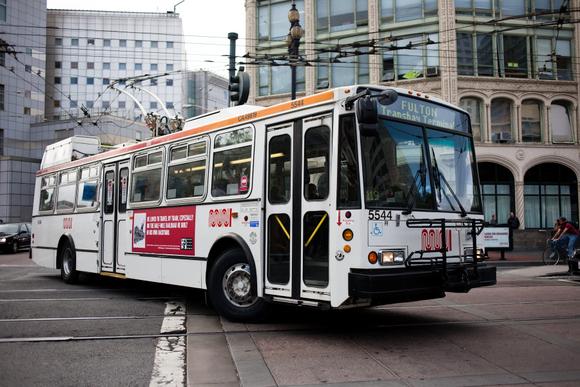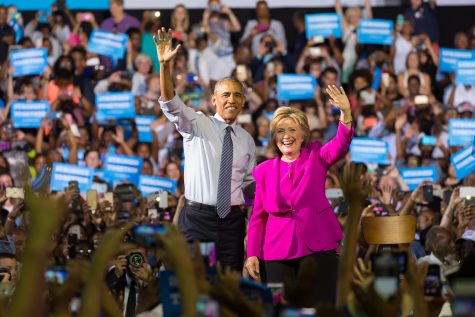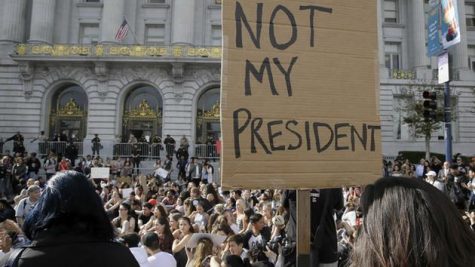SFMTA

(image courtesy of https://goo.gl/0dr1FF)
As someone who has lived in San Francisco for a while, I take pride in our public transit system. It has good coverage of our city (that is, you almost always will find a Muni Station within 10 blocks), and with the new transbay terminal, Muni is set to be more modern than ever. What’s not to love? For one thing, they raised their fares. It used to be that if you were extremely poor, you could get an adult muni pass for $35.00 a month — which is a lot of money for people who work minimum wage and have to choose whether to feed themselves or their family. Now it’s $36.00. Youth between 13 to 17 years old used to be able to purchase a monthly pass for $25.00, but now it’s $26.00. Although this one dollar increase may not seem like a big deal, the difference between $25 per 12 months and $26 per 12 months is $12. This is a chunk out of anyone’s allowance. So, I decided to take Muni one day and jot down notes on the experience in order to see if the raised fares are justified. Here’s what happened:
My daily route home has two legs: the 38R Geary (or Rapid) to Powell Station and the T Line to 20th Street Station. If you don’t know where that is, it’s really close to AT&T Park. On the first part of my journey, I went to Laguna Station to wait for the 38R. The electronic sign for the 38R read: “38R Geary Rapid: 3 mins and 3 mins.” Normally, I take these signs with a grain of salt. They are almost always faulty and display wrong arrival times. The first 38R arrived on time, but was very crowded, and the second one was 5 minutes from the supposed arrival time. It looked dirty, and inside, the bus had an overpowering urine stench. Candy wrappers lined the sticky linoleum floor, and the seats sounded and looked like they could pop out of the bus at any moment due to poor maintenance. The bus was poorly lit, but the sights, such as the Hillary Clinton Headquarters, a movie theatre, and two high end hotels made up for it. I left Laguna Station at 2:09 pm, and arrived at Powell at 2:15 pm. That’s only 6 minutes!
Onto my second leg. Getting to Powell Station was hard enough – dodging people under the influence, trash scattered around on the floor, and many harried commuters who didn’t hesitate to push and shove their way through the crowd. When I finally did get to Powell Station, I found that both escalators were working – a rare occurrence here. In the plaza, homeless men begged for money, and street performers dazzled the crowds with shows of strength, talent, and weirdness. The station itself is a reminder of the 80’s, with its poor choice in aesthetic. The floor is linoleum tile, the lights are a yellow fluorescent, and the the walls were so dirty, that when I ran a napkin against the wall, it came off covered with a layer of who-knows-what. However, unlike the bus, it didn’t smell like urine, and was very well aerated. Although the voice in the station said the T was 2 minutes away it actually arrived earlier, just one minute after I entered the station. When it did arrive, I entered the crowded T and somehow found a seat. The T line does not have 2 cars, which negatively impacts all of its riders.Sometimes, it is so crowded that there is not enough room to move your feet. Luckily, today was not one of those days. People got on and off, and the train started to slow as we passed AT&T Park. This is a constant problem, as the T and the N go through major thoroughfares on the way to Caltrain Station. After Caltrain Station, the T had no more problems. The car itself was not dirty, although its windows had graffiti on them. It was well lit, smelled fine, and there were no major structural problems, other than the A/C switching on and off. I got to where I was going from Powell Station in about 22 minutes, which equates to 11 minutes per mile, bringing total travel time to 34 minutes. While this may seem slow, this is actually a good day for urban travel. Normally, my trip home from SHC can take over an hour.
In conclusion, unless the funds are going to maintenance, janitors, better software, decent seats, modification of their fleet, the new transbay terminal, and most of all, two-car T’s, Muni has no reason to raise rates. It seems only two of these things are set to happen — the transbay terminal and modification of their fleet — but none of them include needed 2 car T’s. Why does muni continue to raise their rates? This affects the poor and the young the most. Muni should not continue to raise their rates, but until people stand up and make a change, nothing is going to happen.








